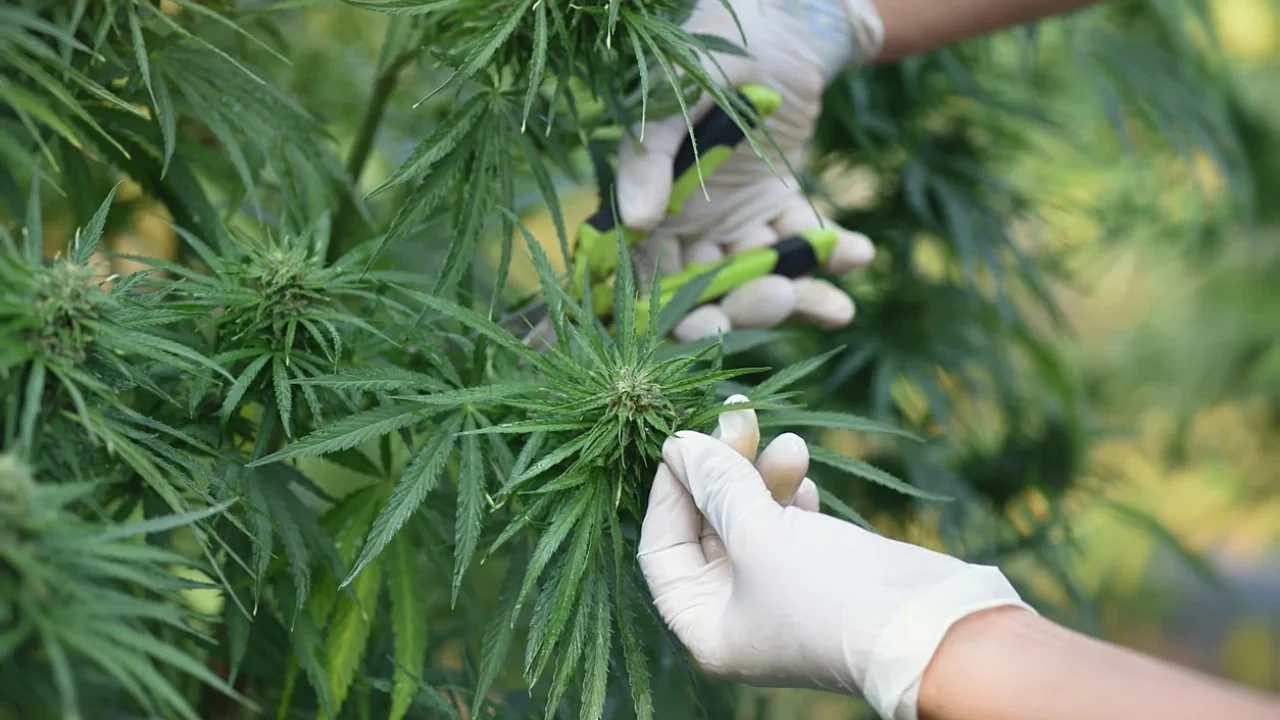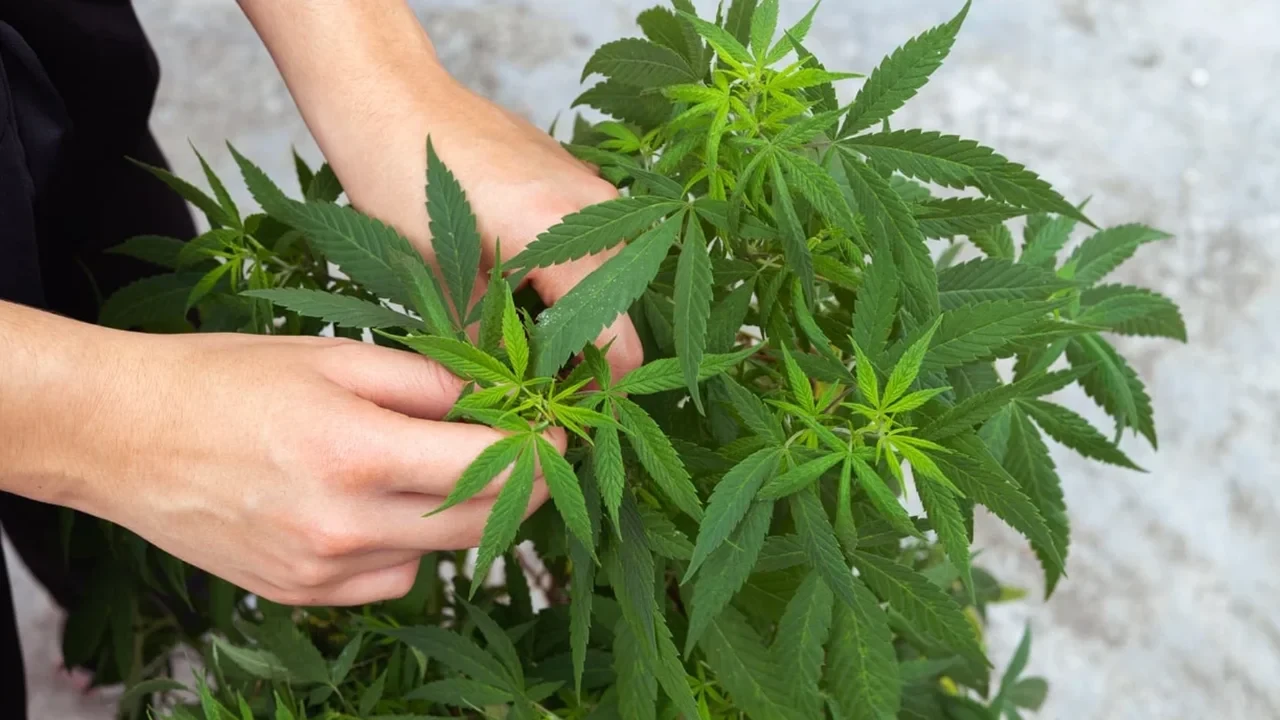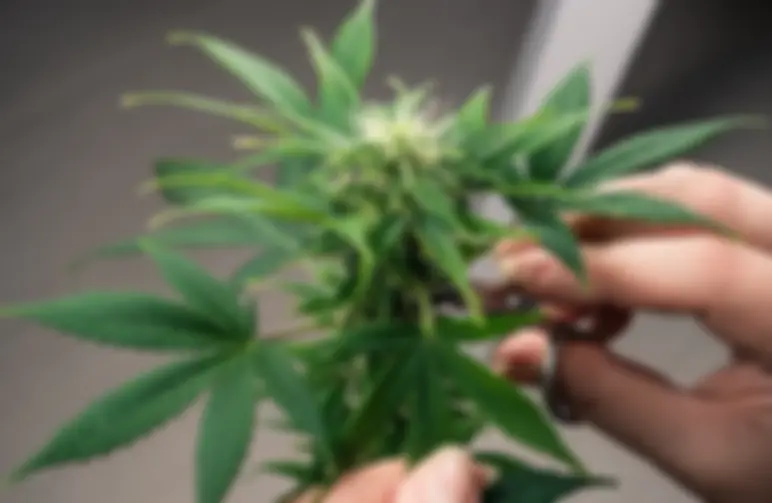Growers are always looking for different ways to get the most out of their crops. Topping, super cropping, and mainlining are common. However, some growers use a technique called defoliation. Others may be hesitant to try it, but if done properly, you can obtain massive yields.
The entire process is short and simple. We will answer all your questions about defoliating autoflowers. And if you want to improve the quality of your buds, we will also provide some helpful tips that can teach you everything you need to know.
What is defoliating autoflowers?
In a nutshell, autoflower defoliation is when you remove excess foliage from your plants. The extra amount of vegetation may not be too much of a problem when you are outside. However, indoor growers may benefit from removing unnecessary foliage to get the most out of their (limited) growing space.
The process involves removing some of the leaves from the branches during different stages of the life cycle. Meanwhile, the bud sites remain intact. Several growers question the use of defoliation. After all, the leaves help store nutrients for the plant. This storage is beneficial in case of droughts or pest infestations.
When growing cannabis indoors, the controlled environment does not require the leaves to store large amounts of nutrients. As a result, the excess foliage is more disadvantageous than useful. Still, defoliation is not meant for every type of setup.
It is necessary to only defoliate in specific situations. People consider it a high-risk technique, and you can end up harming the plant if you do it wrong. For example, some growers make the mistake of removing too much foliage, reducing the yield size.

Should you defoliate autoflowers?
Not all plants are suitable for defoliation. For instance, sick or slow-growing plants would not do well from the stress of the process. It is vital to have healthy and strong weed plants. When it comes to strains, you will have to carefully consider if the variety is suitable for defoliation.
Photoperiod strains like female cannabis seeds are definitely suited for defoliation. They can recover and grow back in time. However, autoflower plants sometimes do not provide you with sufficient time to perform various training techniques.
Still, you may be surprised to learn that you can safely perform defoliation. It is critical to be careful since the process can be risky for this type of cannabis. As long as you defoliate at the right time, your yields should be safe.
The stress may slow down growth for a bit, but the plant can remain healthy with a gentle touch. The buds can still fully develop to their maximum potential.
Advantages of cannabis defoliation on yield
While many growers have concerns about defoliation, there are multiple benefits to the method. When done correctly, you can realize significantly increased yields. Defoliation can accomplish this by redirecting the plant's energy.
Marijuana plants do not have infinite amounts of energy. They can only absorb what is available to them from the light and soil. By removing unnecessary leaves, the plants can make better use of their available resources. The excess foliage does not support the development of the buds since some of the energy is now used to sustain the excessive leaves. Pruning the leaves can do wonders for your harvest as the available energy can now fully be used for bud development. Less dense foliage also improves air circulation.
Mold and pests can still find their way to indoor plants. These nuisances love warm, humid conditions, and they can harm your plants. As a result, the yield size can be reduced. By increasing airflow between the branches, there is less humidity. With this, the risk of mold and insects lowers, and the number of healthy buds goes up. If you want more ways to prevent and get rid of mold, you can read our guide on dealing with mold on weed plants.
When to defoliate autoflowers?
The best time to defoliate weed is when it has at least three nodes. Usually, the plant grows strong enough for the method during the vegetative phase. However, many growers use defoliation before they switch to the flowering stage.
(Heavy) defoliation during flowering
As just mentioned, you also can use the method during the flowering stage. Around three weeks into the flowering period is still fine. However, the earlier you start, the better. Avoid taking away too many leaves once you reach the end of the flowering phase.
Some people may think defoliation is counterproductive,e while the cannabis flowers. However, the buds benefit from exposure to light and air. So, if you need to perform the process again, you can safely do so.
When applying defoliation to autoflowers, stick to the flowering stage if you are new to the process. The vegetative period may present a few more challenges compared to the flowering stage. After some experience, you can carefully use defoliation earlier. Alternatively, you can remove a small portion of leaves from the plant during this time.
What do you need to defoliate autoflower weed plants?
Before you start defoliating autoflowers, you should gather a few things. You do not need much in terms of equipment, and most of them are widely available to buy. The primary tool is a good, sharp pair of scissors. Many people use curved trimming scissors for the best results, but some growers opt for razor blades.
While you can use your hands to pluck or pinch the leaves, a sharp blade can offer you better precision. Not to mention, a smooth cut can help the plant recover from the stress sooner.
Of course, your razor or scissors should be kept clean to prevent the risk of disease. Ethanol-based rubbing alcohol is great for keeping your tools sterilized.
Another item on the list is the plant. The seeds you use should be well-suited for defoliation. Sturdy, bushy indica strain seeds are your best bet. Of course, your hands should be clean as well. It can also be wise to buy a pair of gloves for when they defoliate autoflower cannabis. Gloves can prevent your skin from becoming sticky.
Lastly, it does not hurt to keep some duct tape around. If you accidentally break or cut the stems, the tap can repair any damage.
How to defoliate autoflowers?
The steps to defoliating autoflowers are pretty much the same as the ones for any other strain of marijuana. The process is not complex and only has a few things you need to do for a successful session. In fact, you may find yourself finishing before you know it.
Keep in mind that you should not defoliate autoflowers too much. Experienced growers recommend doing it once during the vegetative phase and once while the plants are flowering. You would do the same actions each time.
To get the most out of defoliation, here is what you should do:
1. Remove the big leaves
During defoliation, you will remove different types of leaves. The first group consists of the big fan leaves on the stems. They are almost as big as a person's hand and have multiple tips, so they stand out from the rest. If the plant does not look too leafy, avoid cutting any fan leaves off.
The reason why you want to cut the large fan leaves off is that they prevent light from reaching the rest of the plant. The upper and outermost ones already have enough light, so you do not need to get rid of them. It is the middle and bottom areas of the marijuana plant that should have fewer leaves crowding each other.
If you are new to the process, cut off a small percentage of the plant's fan leaves to be safe. At least two full ones should remain. The discarded foliage can be placed in a tray or a nearby trash can.
2. Remove leaves that overshadow
The next thing you should do is remove some of the leaves that grow towards the plant. They tend to overshadow the buds, which can prevent the buds from getting sufficient energy. Look for the ones that rest on top of the flower sites and other necessary leaves.
The optimal amount to snip away is anywhere between 10-15%. However, you should avoid cutting off more than 20% of the foliage. You do not want to defoliate your weed plants too much and stunt their growth accidentally. Not to mention, you could cause a nutrient lockout. Fewer leaves on the plant mean the transpiration gets interrupted. As a result, nutrients can build up in the roots. Make sure to leave the growing tips undisturbed as well.
If you keep the leaves, you could use them to make other marijuana products. Some growers turn them into CBD tea or cannabis oil.
3. Remove old yellow leaves
Another thing you need to get rid of is any leaves that look old and yellow. You want to remove the exhausted leaves to free up the energy that the plant spends to keep them alive. Not to mention, more important areas get better light and air circulation.
Start at the bottom of your cannabis plants and work your way up to around the third node. Again, only cut off a few leaves to avoid harming your plant. If you are sparse with pruning, your plant will not get stressed out too much and become weak. However, there will be enough stress for the trichomes to be rich in terpenes.
As you remove old leaves and unnecessary ones, your weed plant will start to improve its structure. If you decide to defoliate while the plants are starting to flower, focus on the leaves that might interfere with the buds.

Tips for the best cannabis defoliation results
Use the tips below for the best results when applying cannabis defoliation.
Avoid defoliation right before harvest.
As mentioned previously, the early moments of the flowering stage are the best time. However, you should not defoliate autoflower weed in the weeks just before harvest. In the last stretch of the flowering period, your plants naturally shed some of their leaves.
If you were to apply defoliation this late, then the plant would have less support than it needs. After all, it still needs sufficient energy to produce potent buds.
Additionally, you should stop the defoliation if you notice the autoflower displays signs of being overly stressed.
Be patient
Many growers make the mistake of going too fast. They cut off too many leaves, or they snap the branches. It is important to be patient and work slowly. Develop a comfortable rhythm and enjoy the process. Keep your focus on the task at hand, and remember to remove around 15% of the plant's foliage. Make an estimation of the amount before you start.
Combine defoliation with other training methods
Perhaps you are wondering if you can apply other training techniques to maximize your yield. Some high-stress methods should not be used on autoflowers. However, the good news is that you can combine defoliation with low-stress training.
The branches are bent down to control the height of the plant. It is necessary to keep pruning and topping to a minimum since you are already removing some leaves.
What have we learned?
The technique of defoliating autoflowers is the seemingly simple task of cutting away excessive leaves. And while you now know how and when to apply defoliation to your autoflowers, it is not without risks. If you are just starting out with growing, it is smart to start with autoflowering weed seeds, but we do not recommend diving into this technique immediately.
sources: https://www.frontiersin.org/journals/plant-science/articles/10.3389/fpls.2021.646020/full





